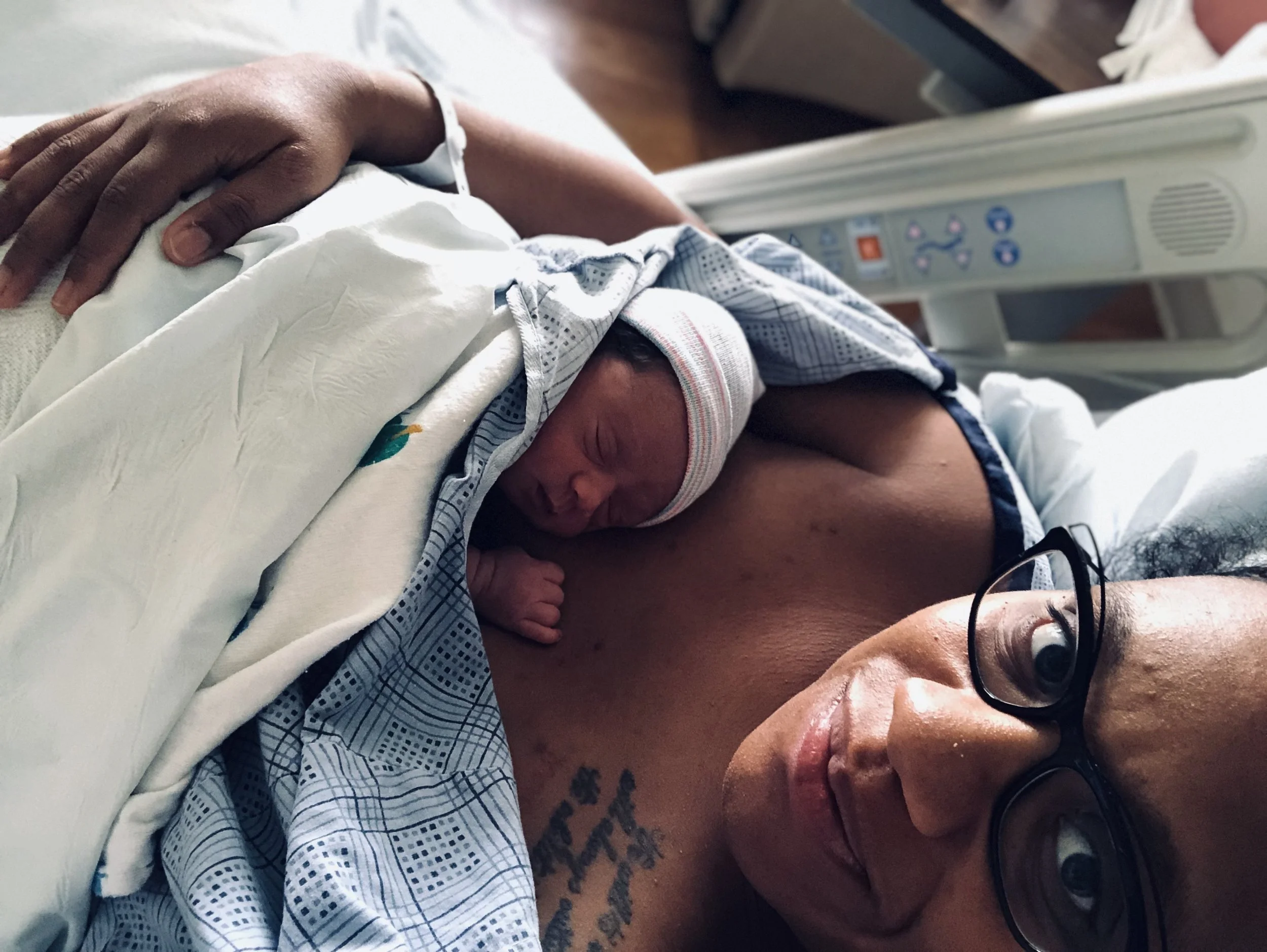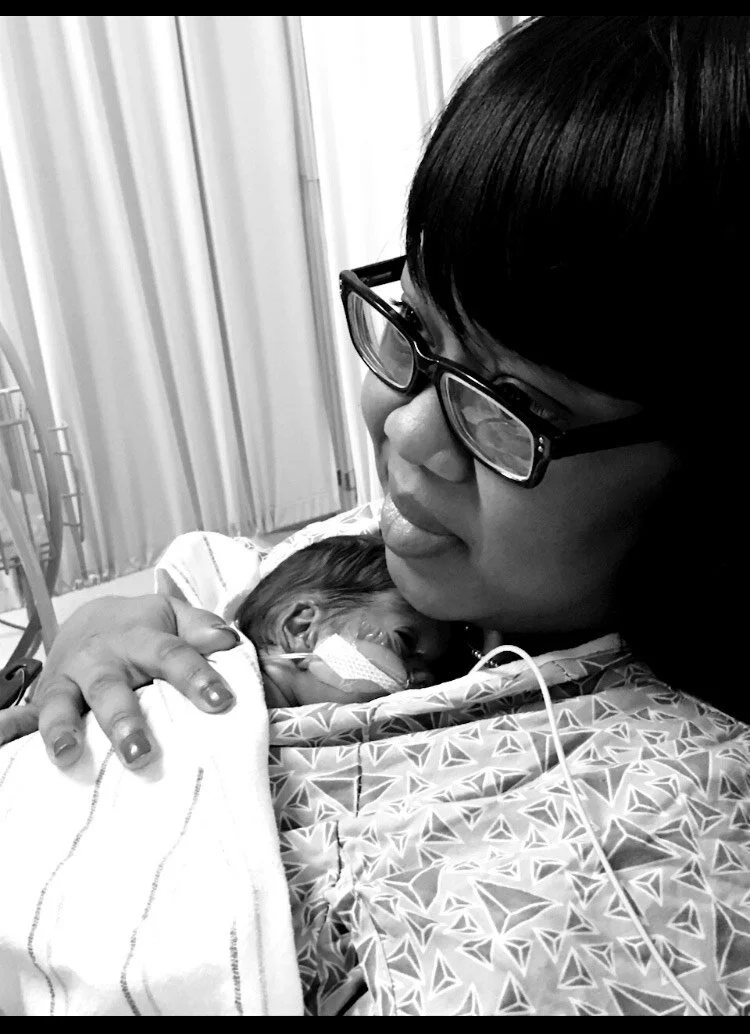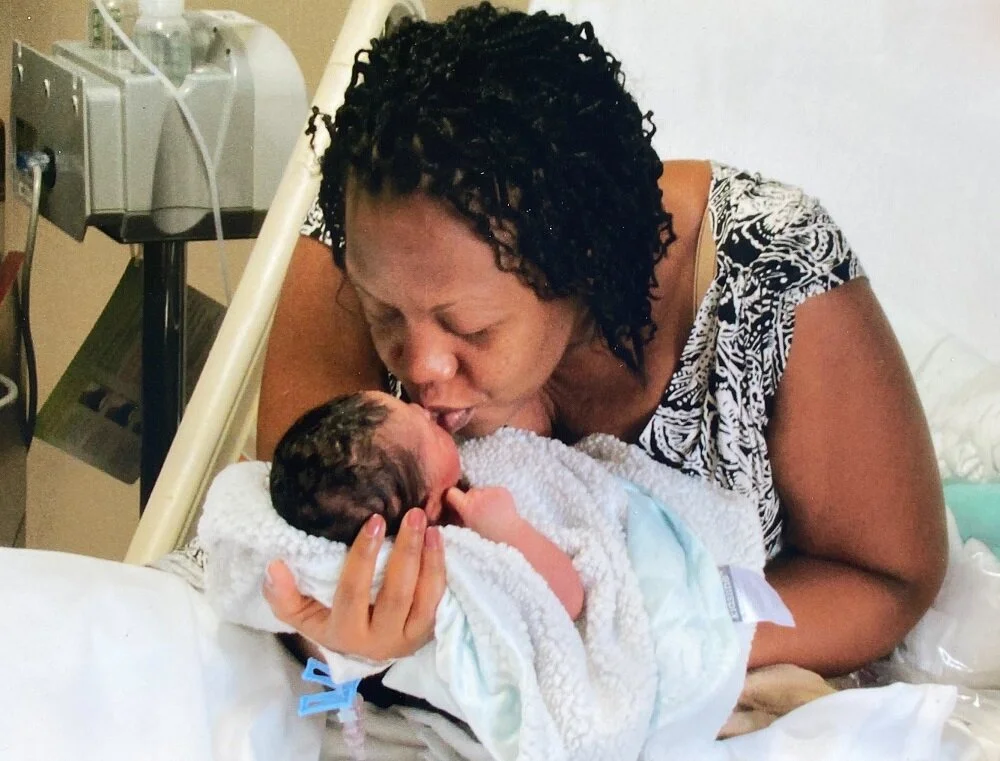For Ivory and Ernest a previous miscarriage had introduced a fear of pregnancy loss that loomed for a while. Their healing has enabled them to share their story with grace and humility. As the pregnancy thrived, Ivory and Ernest began to manage and prepare for childbirth. They hired a ROOTT perinatal support doula to support their pregnancy. They were able to start working with their doula in the critical stages of the first trimester and all the way through labor and immediate postpartum. Ivory always knew she wanted to work with a ROOTT doula and found it helpful to process her feelings and birth plans in the early stages with someone else.
Ivory utilized our podcast to listen to a slew of birth stories to learn what possibilities could present when labor started. An online childbirth education helped them learn even more about expectations and how labor could unfold. Ivory felt empowered with her newly gained knowledge. Ernest graciously shared that he was not emotionally invested in how the pregnancies would go, as he tends to stay in the now. His parenthood journey grew slowly as they got closer to their due date. Ernest started a grieving process of shifting his identity to make space for a new baby. Leaning into the voices of friends that are fathers, he learned to fill the gaps and help with managing stress for Ivory.
When labor started, Ivory texted her doula and Ernest that she was cramping. She wanted to stay active and decided to take a walk and spend some time with her husband at home as she wanted to stay relaxed. Contractions picked up, and they chose to report to the hospital to see how labor was progressing. Labor would go on longer than anticipated, but with the support of Ernest and their doula, Faith, Ivory endured. She gave birth to their daughter and immediately began her breastfeeding journey.
Read More


















